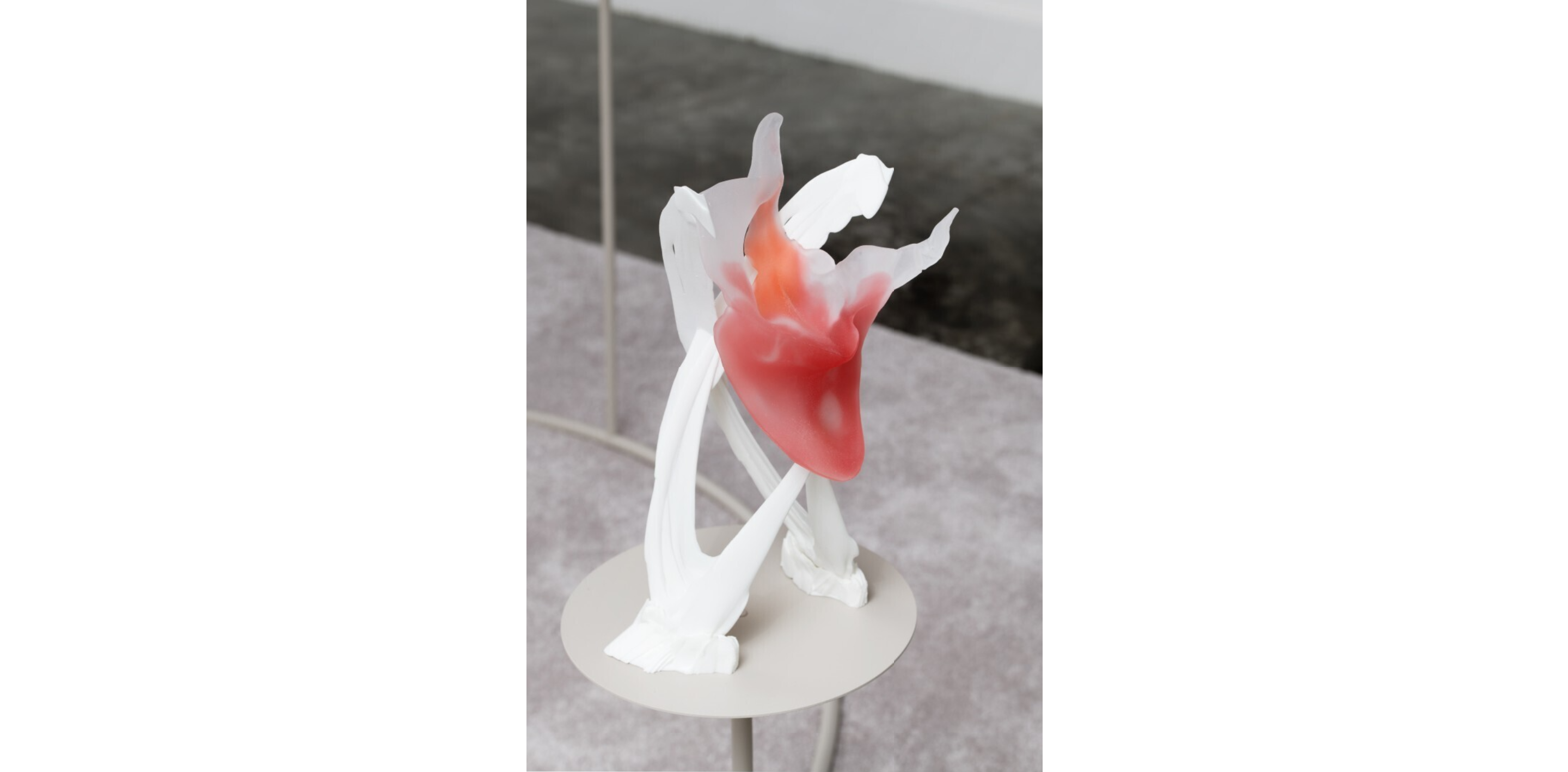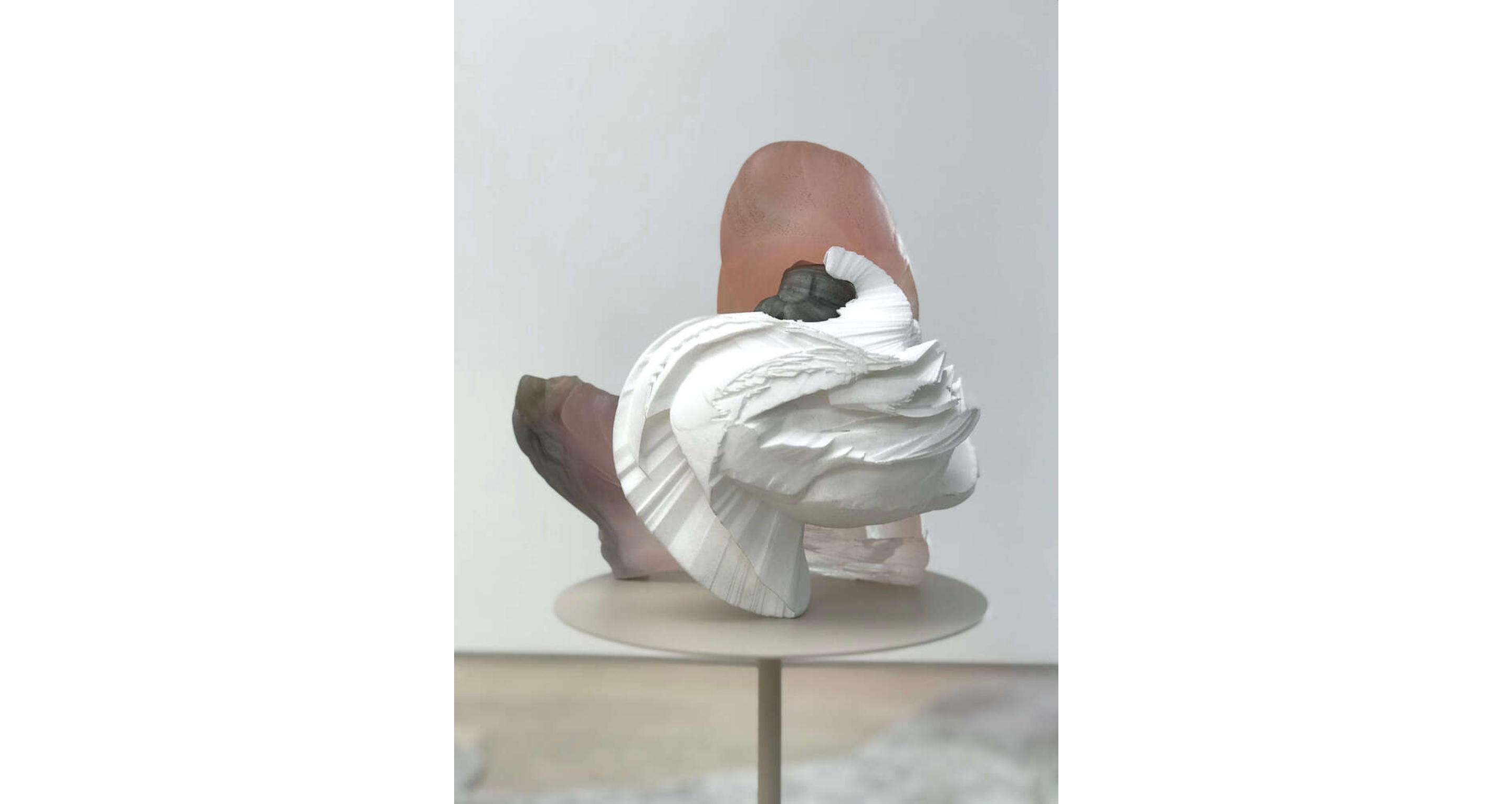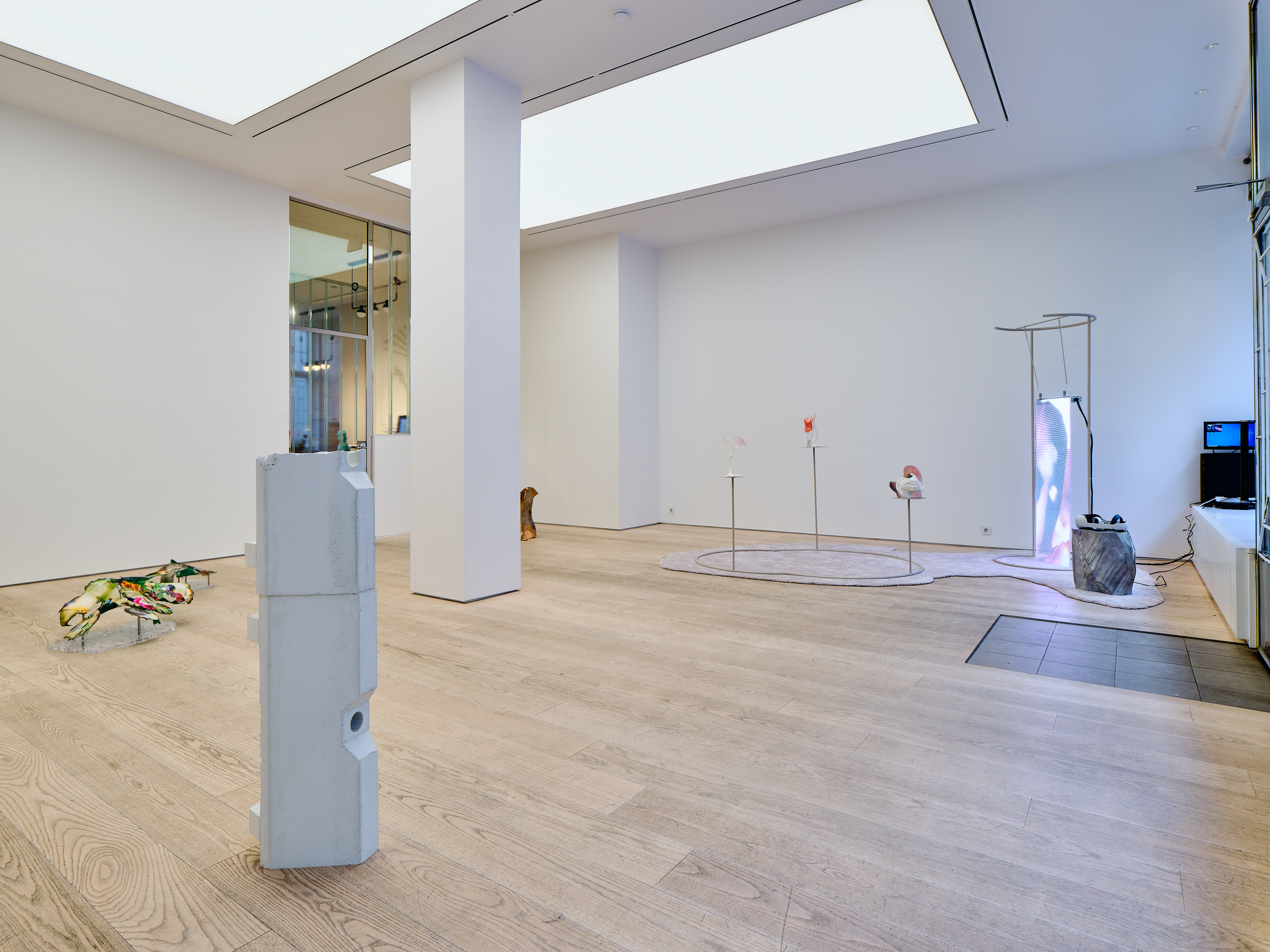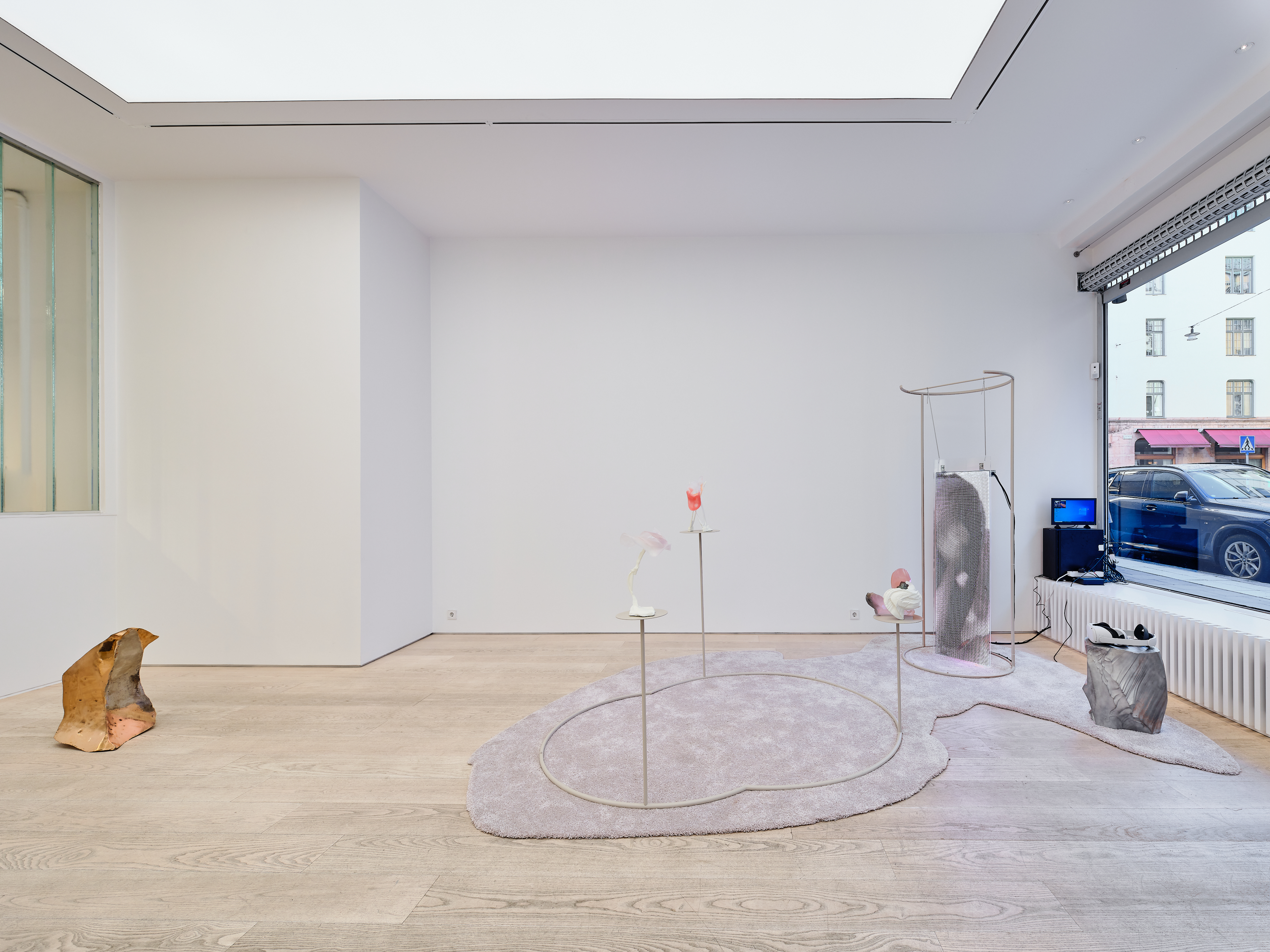
THE OWLS ARE NOT WHAT THEY SEEM, Andrehn-Schiptjenko, Stockholm, SE
4 NOVEMBER - 18 DECEMBER 2021
Andréhn-Schiptjenko is pleased to invite you to the opening of the group-exhibition The Owls Are Not What They Seem, presenting works by Hannah Sophie Dunkelberg, Amalie Jakobsen, Mourad Kouri and Ittah Yoda.
The Owls Are Not What They Seem, is a quote from the cult tv-series Twin Peaks and is one of the most notorious taglines of the series. In the show, owls are a sinister presence. Most theorists are able to come to some general consensus about the meaning behind it, being a reference to the demonic entity who invades the bodies of Twin Peaks' residents in order to wreak havoc on the population. However, some fans on welcometotwinpeaks.com argue for the owls being a symbol of the liminal. Liminality is a term used to describe the psychological process of transitioning across boundaries, borders, and states of mind. The term “limen”, popularised by British cultural anthropologist Victor Turner, comes from the Latin for threshold; it is literally the threshold separating one space from another. It is the place in the wall where people move from one room to another. In the series, the owls are only present during night which is also the time when the demon is active in the town of Twin Peaks. The tagline The Owls Are Not What They Seem functions as a reminder of the liminality of the dusk. As night settles in, the owls come out.
In Marxist theory, society consists of two parts: the base and superstructure. The base comprises the forces and relations of production (e.g. employer–employee work conditions, the technical division of labour, and property relations) into which people enter to produce the necessities and amenities of life. The base determines society's other relationships and ideas to comprise its superstructure, including its culture, institutions, political power structures, roles, rituals, and state. The Greek and Roman civilisations in addition to later classical and naturalist movements created sculptures to resemble life-like forms and shapes. To master the body of mankind and capture the socially constructed “natural” body in marble and painting was a way to enforce the superiority and rule of law, thus legitimising the artistic institutions as part of the Superstructure’s colonial and imperialist states and policies.
As we face the arctic ice disappearing, increasing crops failure, growing inequality, rising right-wing populism, misinformation and unrest; a need for another world sets in. The Anthropocene is no longer a faraway concept but rather a realistic scenario, calling for a Plan B. The demand for resources deriving from space or buried deep beyond the ground is higher than ever. The increased use of controversial techniques such as fracking and the superpower’s race to terraform the arctic region coincides with the mega-rich’s commercialised trips into space. The desire to leave earth is evidential to the fact that we live on a carcass of the ruling Superstructure.
The show The Owls Are Not What They Seem explores contemporary sculpture as a consensus-creating element of culture serving to establish and enforce certain values in society. Values derived from the quality of ambiguity and disorientation that occurs in the middle stage of a rite of passage, when participants (the West) no longer hold their pre-liminal status. Maybe the contemporary angst of the unsettling and dystopian developments in society can be seen as a refusal of accepting the state of transition, and only exists within, the state of the liminal. In the exhibition, the gallery space is the time between the 'what was' and the ‘next’. An ambiguous and collective zone, a season of waiting and not knowing. It’s a place where all transformation takes place, if we learn to wait and let it form us.
The installations of artist duo Ittah Yoda are not limited to the object at hand but rather function as specimens of a therapeutic metaverse that stretches beyond the physical space. By employing virtual reality, Ittah Yoda enhances the bodily presence of their sculptures. Crafted from extremely toxic materials which are sensitive to temperature they conjure different hues and colours depending on the space of which they are placed within. Focusing on the collective and error, their work gives birth to real, virtual and participatory forms that connect the heritage of humanity and the collective unconscious. By constantly updating the virtual reality, the installation is never set but in a constant perpetual state which ties together the physical world, the internet and a haptic dream world.
Danish artist Amalie Jakobsen’s masterly crafted objects consist of aluminium, 24ct gold, copper, bronze, steel and micro USB-chips. The craft of moulding, melting, welding, casting, and assembling turns her practice into a sort of terraforming. The elegant metallic form carries a dichotomous notion of being both an alien-like asteroid, imbued in a certain melancholy, yet something familiar like an ancient fossil that has been on earth since forever. There is an uneasy notion of naturalness to her objects which lies and floats elegantly despite their enormous weight.
Stockholm-based artist Mourad Kouri’s practice stretches between installations, sculptures and performances which try to reframe the complexity of a “multicultural society”, with a focus on existing within a threshold in a state of exile. Kouri’s Broken column (2021) is an extension of his public commission To stack a line (2021) for the new city hall of Uppsala. The stacked concrete bollards, with their contemporary use to regulate movement and prevent vehicle-ramming attacks, are dysfunctional and reconfigured as sculptural infrastructure. Commenting on borders in their geographical, political and emotional capacity, the work creates a reflection on how the state deals with accessibility and security while being in a constant state of emergency as well as how it might be reimagined.
Hannah Sophie Dunkelberg works push against sculpture’s stability, dismantling the integrity of modernism and re-mixing styles from industrial processes to manual labour. Dunkelberg’s work goes materially against the grain, the practice is labour-intensive and reflects her enthusiasm for craftsmanship. Her leaf sculptures translate the technique of photo collage into synthetic and fluid gestures. The works tell of the new way of looking at and reading images existing by digital developments. The digital that seeks the analogue form shows the present interdependence of physical objects and digital process.
Curated by Cuno Andréhn Bärtås.







Special Thanks for VR design to Marta and Tea Strazicic
Sound Design by bod [包家巷]
Photography by Jean-Baptiste Béranger and Hanna Lundberg